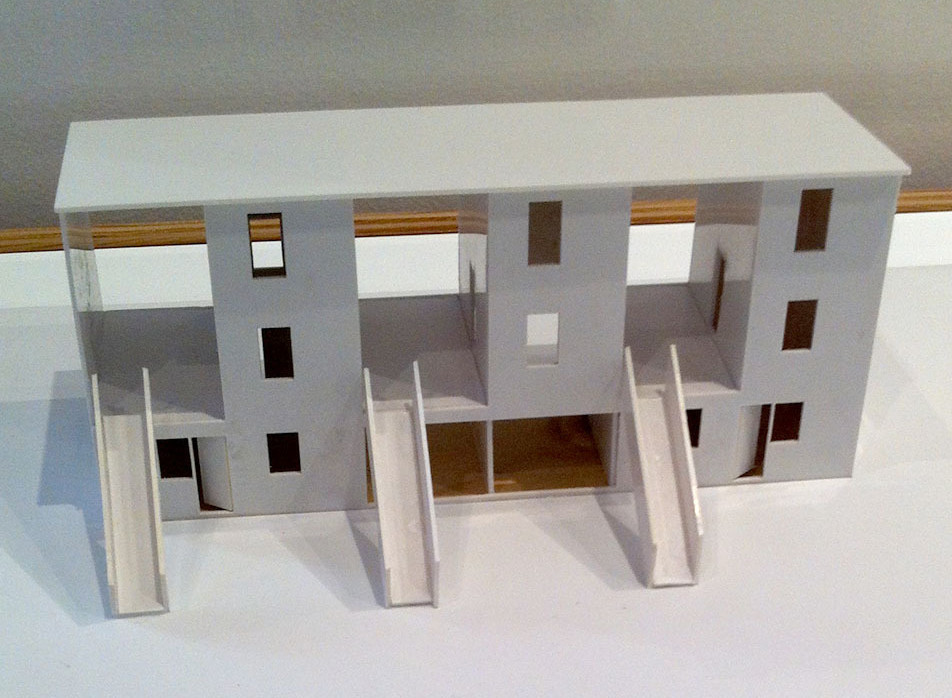Half-built Housing

See the photo above? It's a model of a new model for affordable infill housing: build the basics (with public subsidy), and let the owners add the rest, over time and as their budget and needs dictate. It's a method being tried in Chile, and on display (as in the models above and below) in the "Design With the Other 90%: Cities" exhibit recently opened at Mercy Corps and the Museum of Contemporary Craft in partnership with the Pacific Northwest College of Art.
The "Design With the Other 90%" exhibit is curated by the Cooper-Hewitt Museum, and Portland is only its second stop after showing recently for several months in New York City. (We give it a full review in Culturephile.)
The models pictured in the photographs above and below show one of the exhibit's most intriguing (and relevant to Portland and our planning goals) projects: the Incremental Housing project. The idea is to build affordable housing that will appreciate in value – something that often doesn't happen with public, subsidized, multi-family housing.
The project concept and history are explained thoroughly in the exhibit (there is a lot of text throughout the show; wear comfortable shoes and be prepared to spend some serious time if you want to take it all in) and also in the excellent book that accompanies it.
The Chilean architecture firm Elemental was hired by the local government to design housing “for one hundred families in the poor neighborhood of Quinta Monroy, in Iquique,” on property the families had “illegally occupied for thirty years.” The budget was meager: “a $7,500 subsidy to pay for the land, infrastructure, and each housing unit.” As a solution, the firm “designed half-built houses, called Incremental Housing.”
The first photo (at the top of the page) shows what the architects (and public subsidy) built: a row of connected, single family houses with strategic gaps left open, like rowhouses with deliberately missing teeth. The units are each 323 sq. ft., and encompass the part of the house “the families would never be able to afford – the structure, bathroom, kitchen, and roof. To allow for expansion, only the ground and top floors are constructed; residents are responsible for the rest (72 sq. m. or 775 sq. ft.)." In architect’s parlance, the building is a “framed void that can be filled by the owners according to their needs, possibilities, preferences and own pace.”
The lower photo shows a model of possible structures families could build into and onto the original half-built rowhouses, filling in the gaps over time with whatever materials they have. Together, the two models create a collage of completed housing.
"Design With the Other 90%: Cities" is split between its two host locations, Mercy Corps and MoCC/PNCA, and will be on display through January 5, 2013. We'll check in during September's Design Week/Design Month as each location holds some events connected with the exhibit.

